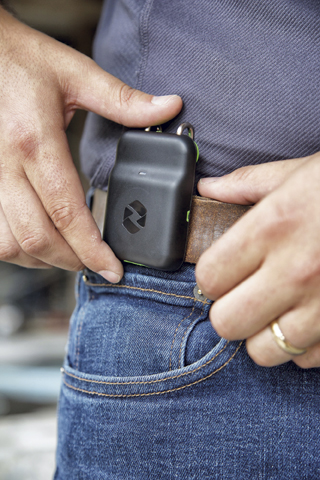Digital advances deliver increased benefits to construction firms and their insurance partners
According to the Bureau of Labor Statistics, fatal accidents in construction were up 5% in 2016—the latest year for which statistics are available —and are at the highest level since 2008. Non-fatal injuries, of course, also are of concern; in addition to physical and human harm, they have significant business impact, leading to lost time, lower productivity and employee morale, and increased insurance costs.
Besides the inherent hazards of a changing physical job site, the lack of work site visibility—the ability to know who is on a job site and where they’re located—impedes safety communication efforts and makes it harder to assess and assign risk. A major cause for low work site visibility is the industry’s lack of digitization; according to JBKnowledge’s 2016 Construction Technology report, construction underspends other industries on technology by 60% to 70%.
Pre-recession construction activity levels and a skilled labor shortage have driven contractors to test and adopt technology that can streamline processes, improve communication, and enhance site safety.
Over the past year, we’ve seen the start of a shift across the construction industry that we believe has far-reaching implications for insurance. Pre-recession construction activity levels and a skilled-labor shortage have driven contractors to test and adopt technology that can streamline processes, improve communication, and enhance site safety.
Now, as we enter a new year, we are confident that momentum will only grow, as IoT-enabled solutions such as wearables, sensors, and drones, among others, become indispensable tools at the job site for safety monitoring, hazard analysis, worker time-tracking, machine maintenance, and overall project quality.
Here’s what insurance brokers and agents should know about the changing construction landscape and the emergence–and potential–of digital tools and records:
Mounting safety challenges—and opportunities
Along with the rise of fatal accidents on construction sites, the labor shortage is forcing general contractors to hire from an increasingly limited pool, often before they have had a chance to fully assess their skills and experience. In 2017, 76% of Associated General Contractors of America (AGC) members reported difficulty in finding skilled laborers. Being short-staffed comes with its own safety and operational risks, and when builders rush to complete a project, corners may be cut, safety procedures may be overlooked, and more accidents may happen.
The rise of Internet-connected devices at the job site, however, is helping to address some of these challenges by providing critical visibility. For example, sensors are collecting and recording worker time and attendance, location, and safety incident data via a device that’s worn on each worker’s belt. Our wearable Spot-r Clip, for example, detects any slip, trip, or fall that occurs on site, identifying who, when, where, and the distance of the fall. With robust digital records showing exactly who is on the job site, where they’re spending their time, and safety incidents that occur, brokers and agents can more accurately understand and address prospect and client risks.
With the automatic collection and transfer of site data provided by these sensors, the construction industry is able to break traditional barriers and connect previously siloed stakeholders. For insurers, this means increased data-driven visibility into site operations and safety-related incidents, improved risk identification and assessment, and ultimately, more accurate premiums.
Insurance partners can benefit from documented insights into their clients’ risk management culture and processes. As the insurance provider, it’s important to know the cutting-edge technology a general contractor or project is using in order to price the policy accordingly.
For example, immediate safety incident alerts provided by wearable sensors can reduce response time and the risk of potentially compounding injuries, and can be used as a proxy for overall loss frequency and severity. Other sensor-based solutions that monitor environmental factors, such as humidity or temperature, which affect material integrity, for example, can help prevent future building defects that are covered under general liability insurance policies.
Power to the adopters
Across industries and categories, as more options become available, power is shifting to the end user. As the construction technology market matures and more solutions are introduced and embraced, the gap between contractors that benefit from technology advances and those that don’t will widen—and so will their bottom lines.
In short order, client end users—the construction firm’s workforce—will become an increasingly valuable source of data and information. Leading insurance providers will tap into workers, whether it’s providing them with tools to report site hazards or monitoring health and well-being with a wearable device, to paint a more complete picture of risk. As technology spreads across the job site, more data will be made available to the worker and this will help project leaders and crews stay on top of schedules and ahead of potential dangers.
Forward-thinking agents and brokers are increasingly expanding their products and services to include risk management consulting or advising. By looking to technology and prioritizing end users, they can help their customers and prospects improve operations, boost safety, and leverage historical data on future projects to reduce overall losses. Insurers with comprehensive technology and data strategies also can help clients reduce losses and can benefit from a rich treasure trove of data and analysis.
Data is king
Artificial intelligence (AI), machine learning, and predictive analytics are getting a lot of attention across indus tries right now. The construction business is no exception. Number-crunching and data have always been a big part of construction projects, but until recently, valuable project information has been largely locked in physical filing cabinets and analog systems, unavailable for practical analysis.
In 2018, as IoT momentum takes hold of the construction industry, big data and more advanced analytics will give project stakeholders, including insurers, an accurate real-time over- view of safety, quality assurance, and workforce and equipment performance. For insurance providers, this real-time data will streamline the process of identifying risk, determining exposure and necessary coverage, and evaluating costs.
When data is collected, shared, and leveraged across project participants, efficiencies are unlocked, risks are mitigated, and overall bottom lines are improved.
The author
Pete Schermerhorn is president and COO of Triax Technologies, which develops and delivers IoT solutions for the construction industry, providing real time job site visibility, improved safety and increased efficiency. Spot-r by Triax is a solution that records and transmits construction workforce and equipment location, utilization and safety data within a defined area, all in real time via wearable and sensor technology. Pete can be reached on LinkedIn or by email at pete@triaxtec.com






